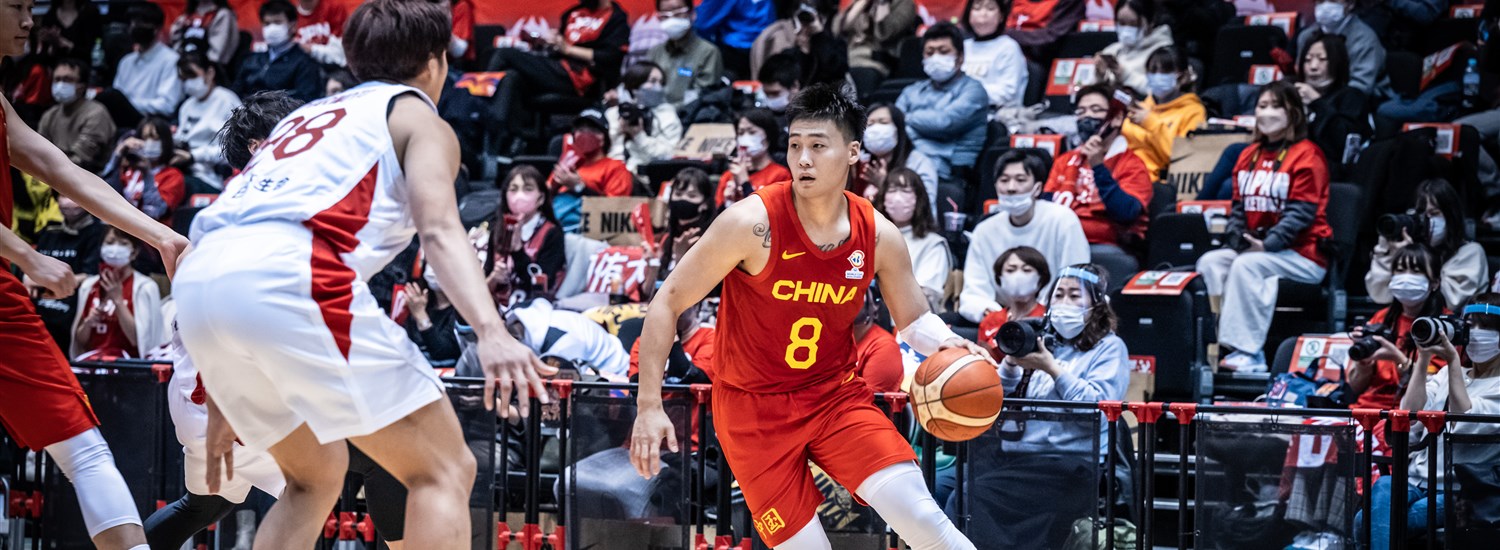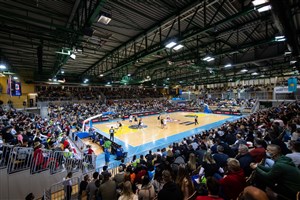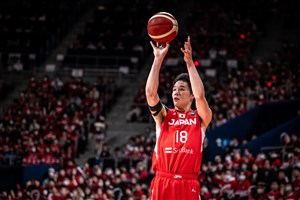
Rui's breakout performance and other takeaways from Group B of Asian Qualifiers
SENDAI (Japan) - When two teams of high-level talent like China and Japan clash, there’s always a lot to learn. Here in the first window of Group B in the FIBA Basketball World Cup 2023 Asian Qualifiers, that was the case for these two teams once again.
Here are 5 key takeaways from the weekend clashes between Japan and China.
Connect Four
These two wins mark the third and fourth straight win for China over Japan just in this calendar year, taking into consideration the Asia Cup Qualifiers clashes.
While the scores were relatively close back in the Clark bubble games, China exerted their dominance in both games of the World Cup Qualifiers in Sendai by winning by an average of 24.5 points per game. In both games, they led by at least 30 points at one point in the contest.

Obviously, there are a lot of variable factors in between both pairs of games, especially for Japan. The coaching change from Julio Lamas, who had been with the team for 4 years, to Tom Hovasse, who has been with the team for only a few months, definitely meant that there would be a transition period. The players selected for this first window for Japan also featured a lot of fresh faces, meaning that there would be growing pains.
The final factor is that Japan are already qualified for the World Cup as hosts which means that there is less pressure to immediately win right out of the gate.
This doesn’t take away how impressive it was for China to have beaten Japan in dominating fashion over the weekend, but it does mean that Japan fans don’t have to panic… yet.
On Your Marks
With that said, there is one area of the game in which Japan basketball fans should have some slight concern.
From the past three games against China, specifically these two in the World Cup Qualifiers, Japan were slow to get into rhythm. They started the first game on Saturday down 19-2, then trailed 8-0 again in the rematch on Sunday. These slow starts were emphasized as an area to improve on by coach Tom Hovasse in the postgame press conferences.
Japan did well in regrouping and adjusting to the situation, but falling behind early on did knock out the wind in their winning chances.

Again, this is something that can happen to a team that is featuring a newly appointed head coach with several players making their debuts and is certainly something that can be improved on down the road.
Inside Out
China’s approach on offense made quite a shift from game 1 to game 2.
In game 1, it was the big men from Zhou Qi (24 points) and Hu Jinqiu (15 points) that shouldered the offensive load. Coach Du Feng utilized the size advantage he had in his roster and it worked efficiently.
China could have gone the same route in game 2 even with Zhou sidelined, but instead took to the perimeter to rack up their points. Three of the top four scorers who combined for 54 points were guards, while forward Zhang Zhenlin added in 17 points as well. The team knocked down 14 three-pointers on 24 attempts, nearly doubling the conversation rate from 5-17 in game 1.

The bottom line here is that China are talented enough to beat teams from both outside and inside of the arc.
Silver Linings
Among one of the positives coach Hovasse took out of these past two games was the potential some of his younger players flashed. One of those players that is worth mentioning is Yudai Nishida.

Japan’s youth national team program has groomed some outstanding players in the past from Rui Hachimura to Yudai Baba and it’s possible that Nishida could be next in line. The 22-year-old was the main star in previous youth national teams and has played bits and pieces in some senior national team call ups. In this first window, however, coach Hovasse gave him some significant playing time on the court and Nishida responded well to the opportunity.
The numbers aren’t explosive, but averaging 10.5 points, 2 rebounds, and 2 assists per game in 19 minutes played per contest makes him a player worth watching in the future.
China’s own Rui
It would have been fun to see Rui Hachimura in this first window for Japan. Eventually, the fans were treated to an entertaining performance by a “Rui”, but it was a Rui on China’s side, Zhao Rui, instead.

Zhao had already played well in the first game with an all-around production line of 10 points, 6 rebounds, 5 assists, and 3 steals, but it was his breakout performance in the following game that turned heads. The 25-year-old torched Japan’s defense for 27 points on 6 three-pointers while still posting 4 rebounds, 5 assists, and 4 steals in the win.
If there’s you had to choose one player to highlight from China in the first window, it is definitely Zhao.
FIBA


















